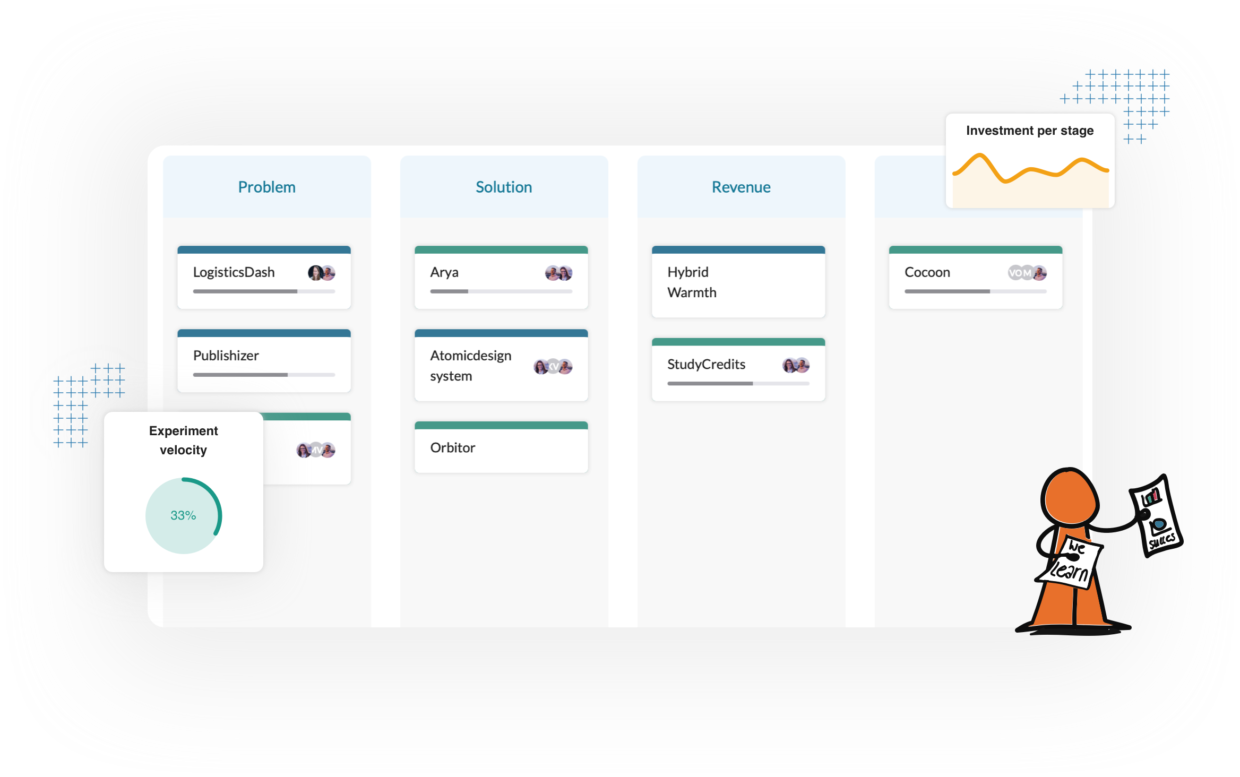Innovation tracking: How to get started?
Table of Contents
We see a lot of organizations that want to start tracking innovation performance by using innovation accounting. But where should you start? And what are the hurdles? Questions like these are very common and logical as we are just entering a new area of corporate innovation. In this blog, we will discuss what to do and what not to do when starting to track your innovation performance.

When innovation managers are looking to professionalize their innovation efforts, measuring the innovation performance is one of the things they want to get in place. But, before you can track your innovation, you need to put a couple of prerequisites in mind. Esther explains these prerequisites thoroughly in her 5 conditions for professionalizing innovation blog. Innovation managers often try to improve their system as a whole. But when they try to do so. It is easier to overthink how we might structure and improve our program than it is to actually take (small) incremental steps to reach that point. If we give in to this tendency, we risk spending months (if not years) without moving innovation forward. It is only possible to track innovations that are actually happening. Thus, these KPIs only work if startups are actively learning by running experiments, and if they’re kept track of in a structured fashion.
Let’s use an analogy for the sake of argument: When building and testing a solution, you’ll only gain relevant data and learn if it works the way you’ve intended, once you let your users engage with it. The same applies to tracking innovation. You want to learn as fast as possible how your innovation program performs and how startups (your users) are interacting with it. Where does it do well and where does it require improvement?
When we consider it as such, it seems obvious that the only way to gather and analyze data is to facilitate and structure interactions that generate it in the first place. Yet many of us would rather overthink what we’re going to track and how we’re going to do so. If we were to run into a startup that would spend weeks thinking about how they would track an experiment’s performance before actually running it, wouldn’t we be concerned? Precisely.
Tracking innovation is like steering a boat
From the perspective of startups, Tristan Kromer appropriately calls this the Rudder Fallacy. It’s based on the idea that the rudder of a boat only works when you’re moving. If you try to steer without moving at all, you’re going nowhere. Yes, chances are that you’re heading the wrong way initially. But you’ll only know by doing so, and you’ll only be able to correct your steering if you’re moving somewhere in the first place. The same logic applies to managing innovation.
So our question becomes: how can we sail this ship in an unknown direction without the risk of sinking it? Or: how can we start structuring and tracking innovation without the risk of wasting the time of those involved?
[convertkit form=2588626]
3 Rules when you start to track innovation
The latter question is tough to answer. You’ll only learn the true answer for your company by doing. However, there are a few ‘rules’ that we believe should always be applied in ‘sailing your ship’:
- You’ll have a lot less of a headache if you can track universal aspects of innovation objectively. Doing so requires the startups in your portfolio to have a unified way of working. Applying the same principles to all startups in how they run experiments, learn, and through what stages they go through is a prerequisite for effective measurement and, consequently, professionalizing innovation.
- Instead of worrying about all the aspects that you would like to keep track of, and how you would be tracking them, start by focussing on the few KPIs that are always applicable. The three KPIs that we always start off with focus on experiment velocity, learning velocity, and team happiness. To make your life easy, our platform is already keeping track of these for you.
- Most importantly, a top-down approach to control success or progress with your startups doesn’t work. It would swamp them with irrelevant questions. It is far more effective to recognize what kind of data is relevant for you to be able to steer towards a better program or to make better decisions. Then you can gather data that your startups already generate (e.g. by running experiments and learning about their business model). Subsequently, you can abstract that data into insights that help you in making better decisions.
GroundControl can help
GroundControl is heavily built on these principles of tracking your innovation. We understand that setting up something like innovation accounting, costs a lot of time, energy, and precision. So we can make it easier. Some hurdles we see managers face is that they don’t (initially) like to add startups to their portfolios when trying our product. Instead, we see them taking a lot of time figuring out on their own how they should structure and measure their innovation program. While it’s completely understandable that they don’t want to throw their startups into deep with the risk of wasting their time, we do think that it’s important that startups get involved as soon as possible, and this behavior directly points out the problem that managers have when starting to track their innovation.
[convertkit form=2602167]
